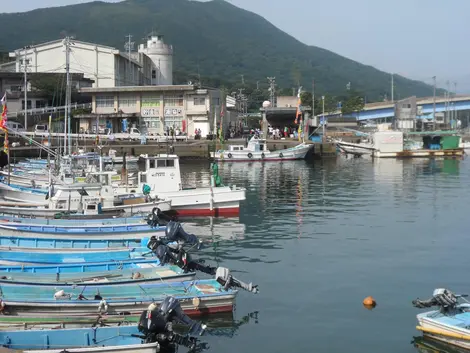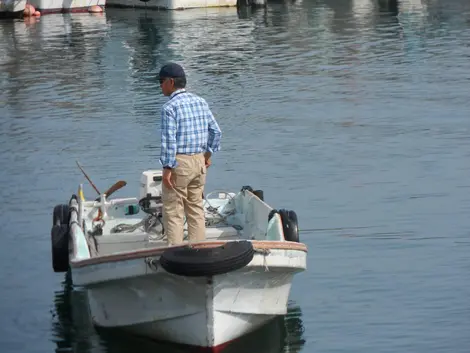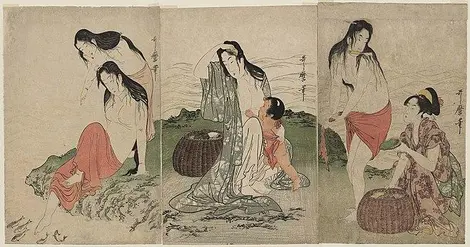Ama: Japanese artisan divers
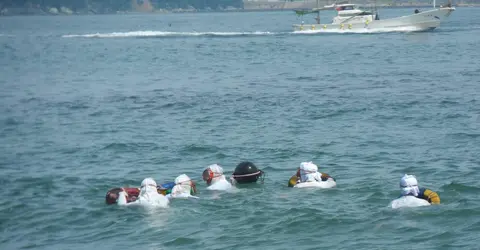
Ama: les plongeuses artisanales japonaises
Ph.L
Who are the last sirens of Japan?
Toura turn considéréescomme objetsde fantasy, women emeritus case, missed etgarçons, ama fascinated for centuries by their unique craft and leurcaractère sturdy. Sielles have live autrefoisleurscommunautés pèchegrâceà of pearl harvesting sea urchins, cesfemmes âgéesaujourd'hui deplusde 60years sontles last guardians of a millenary know-how being dedisparition: Traditional laplongée really apnée.Quisont ama What remains? of their practice at the time of industrial diving? Today Japan takes you in the footsteps of Japan's last mermaids.
Artisanal diving: an activity in decline
6 a.m. The sun has only risen for a few hours on the coast of Mie prefecture , and a group of ama is already getting down to sea.
Accompanied by a tamae , a motor boat driver, these women aged 50 to 75 head for the waves with only a basket and a chisel. Their goal? Snorkel up to 10 meters deep to collect the most beautiful treasures that the waves have to offer.
This could make people smile in the age of industrial fishing and yet there are still a few hundred around Japan today practicing artisanal diving.
- See also : Scuba diving in Okinawa
Widespread on the southern coasts of the archipelago, snorkeling has always been a women's affair. The divers learn the basics of the profession from the age of 15 , and train several hours a day under the watchful eye of their elders, waiting for the moment when they too can participate in the diving season. From March to November , it was therefore a good thousand women diving topless on the Japanese coast fifty years ago.
Today, female divers have aged. And now wearing a wetsuit they brave the cold waters of the Pacific. During two to three sessions of one and a half hours each, they will space out around twenty dives of 5 to 10 minutes in apnea. A performance which has earned them the nickname of "sirens of Japan" , and which has made them real engines of the local economy.
Indeed, the spoils of the divers are invaluable: abalone, seaweed, sea urchins , or even pearls for the luckiest among them, the ama baskets are snapped up like buns when they come out of the water. the latter (especially pearls and abalone) can easily reach several hundred euros!
In the past, this precious treasure allowed small maritime villages to live comfortably, but nowadays, with the rural exodus and the possibility to study for a long time, few young country girls are ready to sacrifice their urban dream for a life at sea. This is why the practice is in decline, and the diving grannies of Mie are probably the last guardians of a thousand-year-old know-how doomed to disappear.
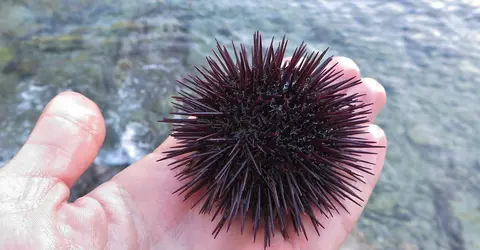
L'oursin, un des trésors de plongée
Wikimédia
Exceptional women in a patriarchal society
If it is mainly for their talented divers that the ama are famous in Japan, it is also for their important status within the fishing community that they attract all eyes. A status that both disturbs and fascinates, since it goes against everything that is expected of women in Japanese society.
Too muscular to be women, too talkative to be discreet, Japanese divers are indeed far from the usual image of the sweet and simple woman that animates the Japanese. They have a fiery temperament, and their activity has even redefined the logic of the traditional household, since they are the ones who keep the home alive in a society where the man is supposed to provide for the family.
Financial pillars of the household, they also have an important religious power. And these are still today the only women to play a leading role in the same way as municipal officials in local processions in honor of the goddess Amaterasu , the sun goddess whose protection they hold.
This side outside the norm, many artists were inspired by it. Start with the printmakers of the Edo period (1603-1868) who represented ama as veritable mermaids, attractive but dangerous for the male gender.
What future for AMAs?
Although nowadays the fishing communities of Mie no longer make a living as well from the diving of the ama , these resourceful women continue to do everything to make their activity thrive. An activity which now has a new counterpart. Tourism.
Still very popular with Japanese travelers, artisanal divers have indeed become true showwomen! Today they no longer hesitate to demonstrate their talents to the delight of amateur photographers. And they often combine their work as a diver with a small part-time job in local restaurants , where they talk fervently about their profession while serving the fruits of their labor.
Tourism remains in effect for the moment the best way to save this ancient art in danger of extinction , by making travelers aware of the disappearance of local traditions and by anchoring the practice in Japanese folklore.
Interested in the life of the last traditional Japanese divers? Get your Japan Rail Pass and meet them in Mie prefecture.




